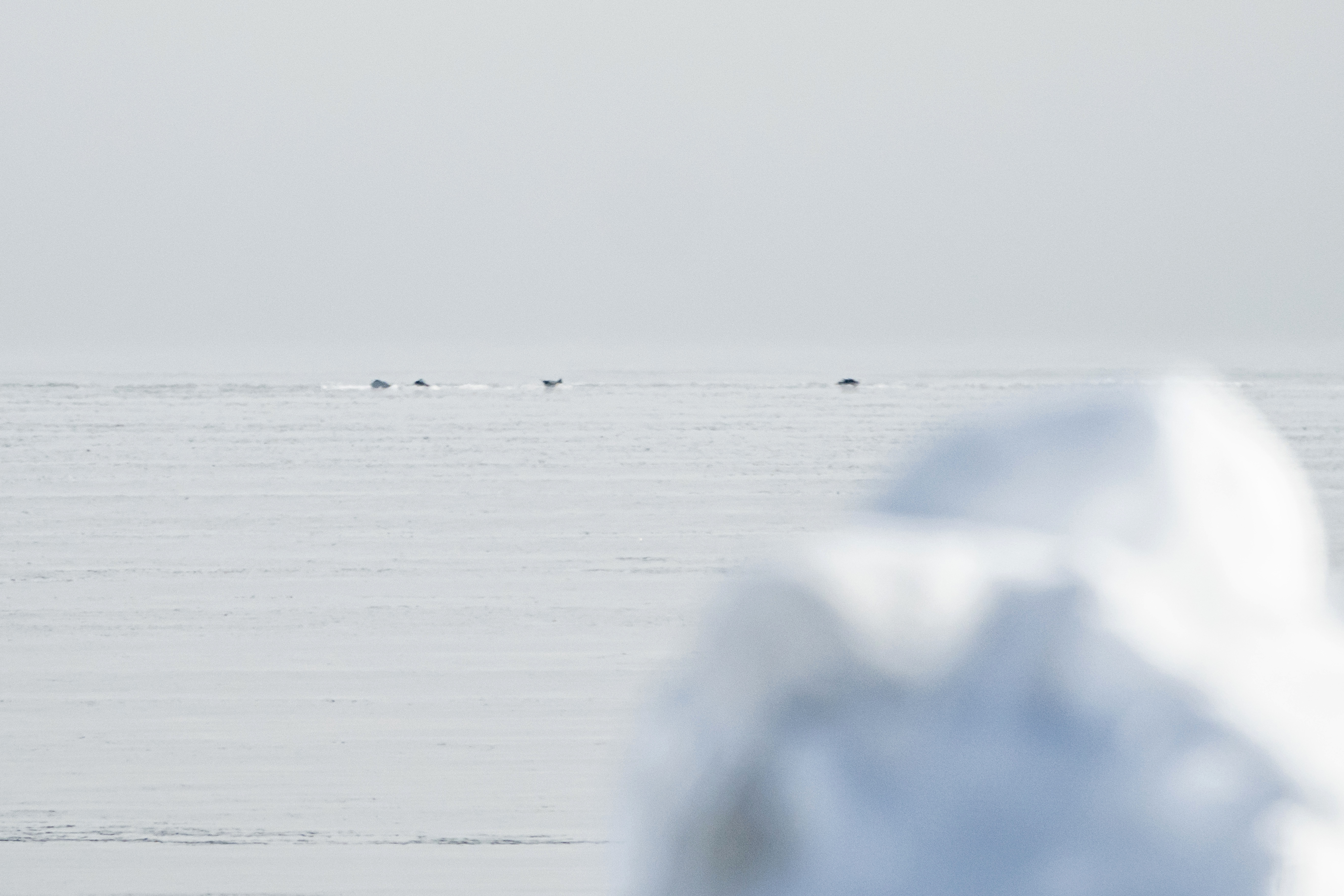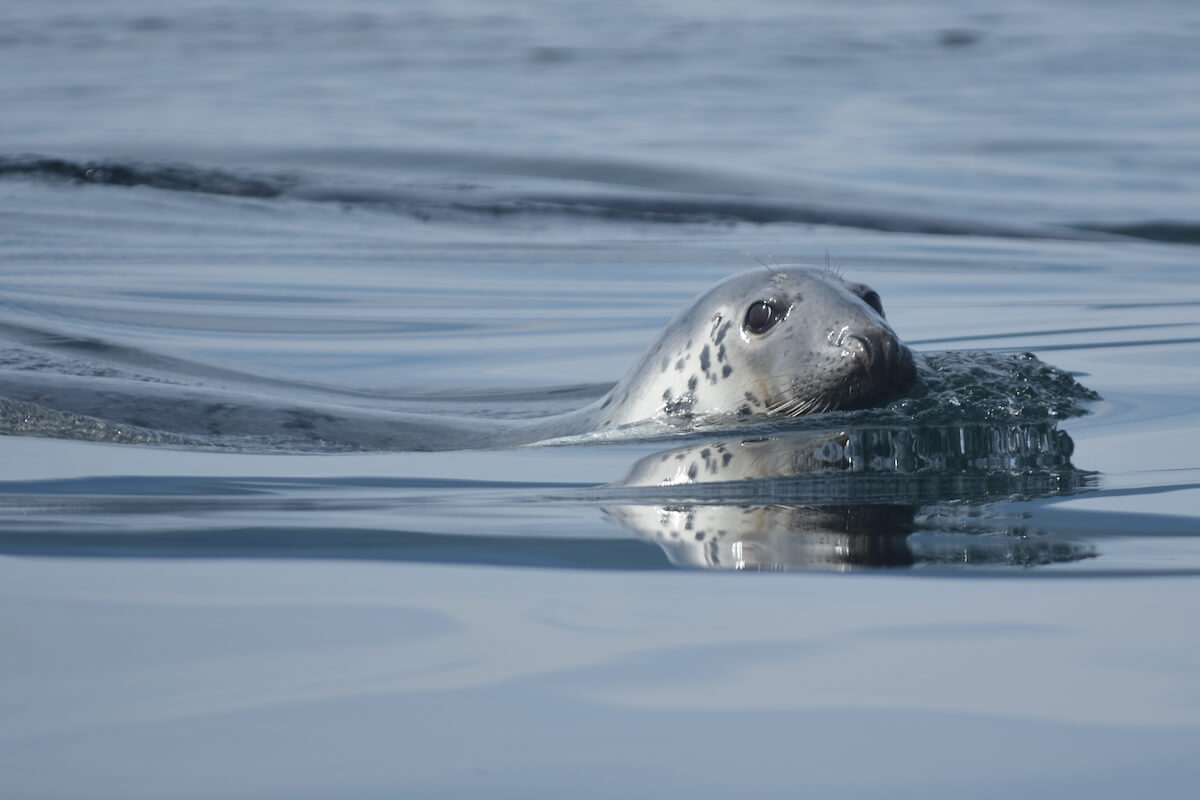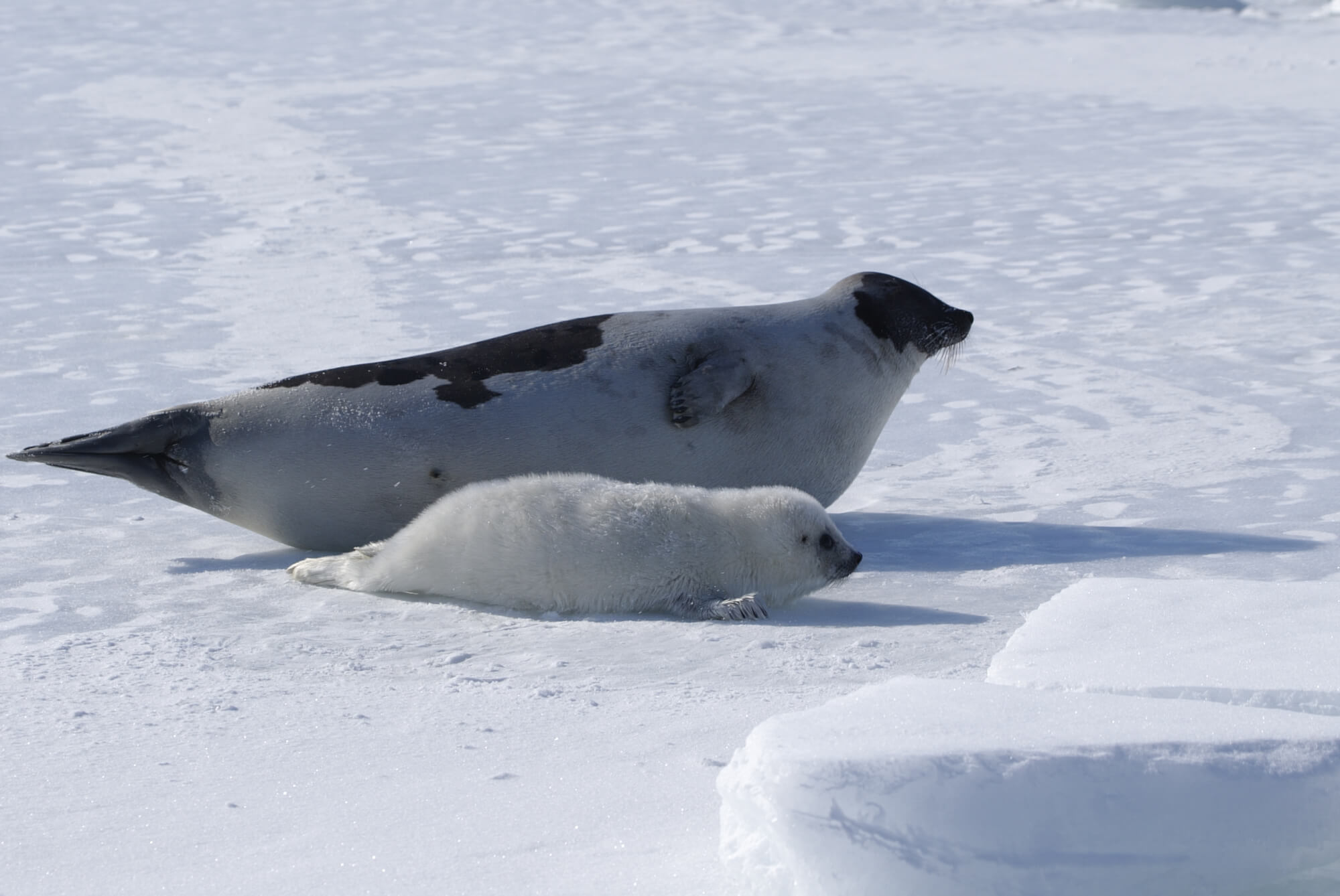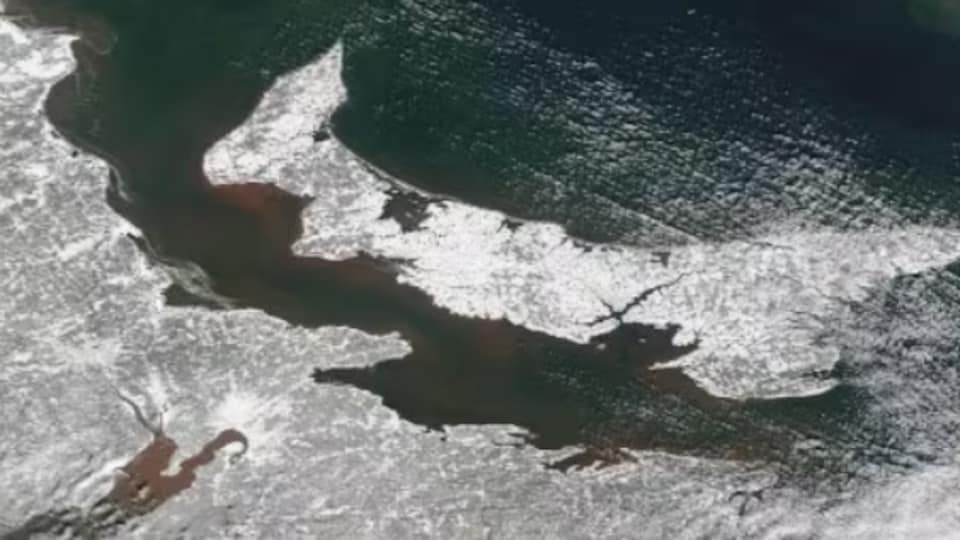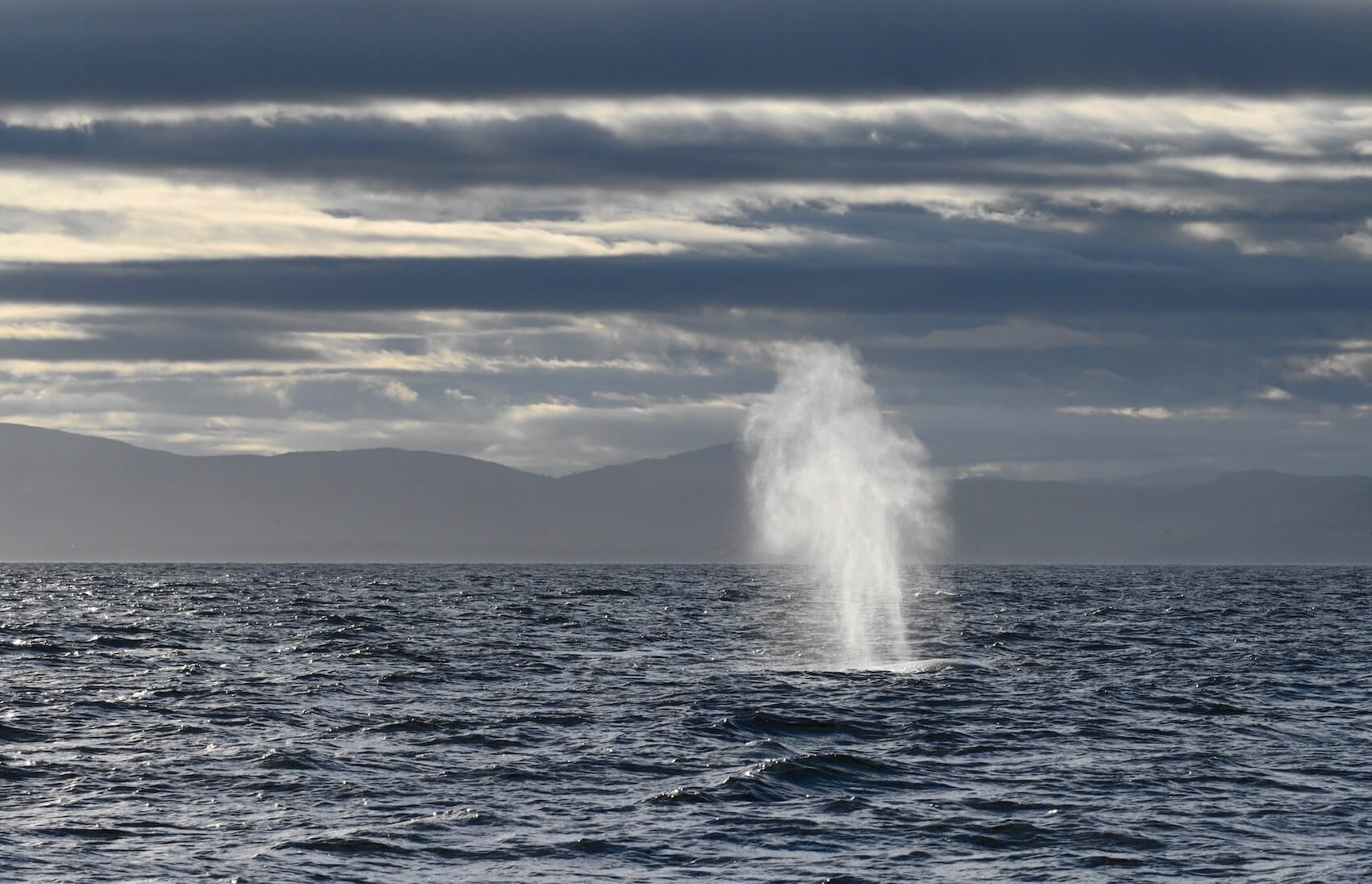On the horizon, on the ice and in the waves, every week is different than the one before. Few marine mammals have been sighted in recent days despite the fact that observers remain on the lookout, continually scanning the St. Lawrence in search of pinnipeds and cetaceans.
Des taches noires sur la glace
A resident of Gallix was lucky enough to see a few pinnipeds in the last week. Her first encounter took place on January 31: “In the late afternoon, the sea was calm and offshore, I saw a big black spot on the horizon. Probably a seal or two on a chunk of ice, but it was too far to confirm with certainty! The next day, luck was on her side again and she describes to us her observation: “I just saw four of them on the ice or snow offshore, not quite as far as they were yesterday.”
In Franquelin, ice prevents any sighting of large whales and there does not seem to be the slightest trace of a seal on the horizon. At Cap de Bon-Désir in Les Bergeronnes, a solitary beluga is spotted swimming offshore while harbour seals are resting quietly on the shore and ice is beginning to form in the bay. The presence of a dozen or so harp seals was also reported.
Even if it is sometimes difficult to know what kind of seal we are dealing with, especially if the individuals are far away, there are a few tricks that can help. Harbour seals, which are year-round residents in the St. Lawrence, have rounded heads and V-shaped nostrils. Their snout resembles that of a dog. Greyish-yellow to light brown in colour, their coat has a few spots on the back, while their belly is more uniform. The harp seal arrives in the St. Lawrence in the fall and leaves in the spring. Newborns are completely white, while adults have irregular black spots. Males show a black harp-shaped marking on their backs, while this pattern is not always present in females. Grey seals are not normally observed in the St. Lawrence during the winter. Instead, they are found off the coasts of Nova Scotia, where they breed and give birth.
Concerns in the gulf
In the Gulf of St. Lawrence, the lack of ice is cause for worry. At the end of January, ice cover was a mere 2%. Due to the changing climate, ice cover on the St. Lawrence is trending downward. Over the past 10 to 15 years, ice cover has been around 15%, while the 30-year average is closer to 25%. Ice, however, has long played a crucial role in protecting the coasts and areas where seals can give birth. Hopefully the cold weather announced over the next few days will allow the ice to take better hold in the region.


